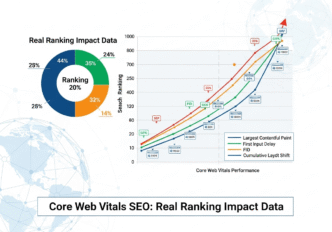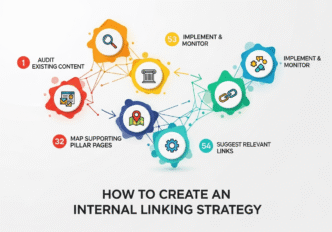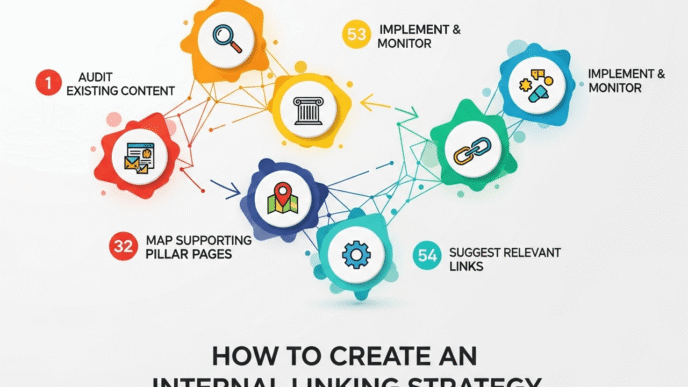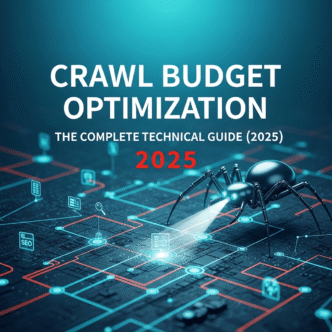Ever wonder how your competitors seem to magically rank for all the right keywords while you’re stuck on page 47 of Google? Plot twist: they’re not magic wizards – they’re just better at competitor keyword research! While you’ve been guessing which keywords to target, smart marketers have been legally “borrowing” proven strategies from their competition.
Here’s the kicker: your competitors have already done the hard work of testing which keywords actually convert. Why reinvent the wheel when you can simply reverse-engineer their success and improve upon it? Time to become a keyword detective!
Table of Contents
Toggle
What Is Competitor Keyword Research? (Your Legal Espionage Guide)
Competitor keyword research is the process of analyzing what keywords your rivals rank for, how they structure their content, and which terms drive their organic traffic. Think of it as being Sherlock Holmes, but instead of solving crimes, you’re uncovering keyword goldmines.
This SEO competitive research approach isn’t just smart – it’s essential. According to Ahrefs’ study of 2 million keywords, websites that regularly conduct competitor analysis grow their organic traffic 67% faster than those flying blind.
Pro Tip: Competitor analysis isn’t about copying – it’s about finding gaps, identifying opportunities, and understanding what works in your industry so you can do it better.
“The best businesses learn from their competition, then execute better. In SEO, competitor keyword research is your roadmap to those learning opportunities.” – Digital Marketing Expert
Why Should You Research Competitor Keywords? (The Strategic Advantage)
The Competitive Intelligence Benefits:
1. Skip the Guesswork Instead of hoping your keyword choices work, you’re targeting terms with proven traffic potential.
2. Discover Hidden Opportunities Find profitable keywords your competitors rank for that you haven’t even considered.
3. Identify Content Gaps Spot topics your competitors cover that you’re missing entirely.
4. Understand Search Intent See how successful sites structure content around specific keywords.
5. Benchmark Your Performance Know exactly where you stand compared to industry leaders.
Real-World Success Example:
A small SaaS company used competitor keyword analysis to identify that their main rival ranked for “project management software for remote teams” but ignored “project management tools for distributed workforce.”
By targeting this keyword gap, they captured 2,500+ monthly organic visitors within 4 months – traffic their competitor was completely missing!
How to Research Competitor Keywords for Free (No Budget Required)
Method 1: The Google Detective Approach
Step 1: Site Search Analysis
- Use
site:competitor.comin Google - Add your target keywords:
site:competitor.com "project management" - Analyze their top-ranking pages
Step 2: Google Search Console Insights
- Check which competitors appear in your keyword rankings
- Identify sites consistently outranking you
- Note their content strategies and formats
Step 3: Manual SERP Analysis
- Search your target keywords manually
- Document which competitors consistently appear
- Analyze their title tags and meta descriptions
Method 2: Free Tool Arsenal
Ubersuggest (Limited Free Version):
- Enter competitor domains
- View their top organic keywords
- Export data for analysis
SEMrush (Free Account):
- 10 free searches per day
- Competitor analysis SEO overview
- Top organic keywords list
SimilarWeb:
- Traffic overview and sources
- Popular pages analysis
- Audience insights
Pro Tip: Rotate between free tools daily to maximize your research without hitting limits. Monday = Ubersuggest, Tuesday = SEMrush, Wednesday = SimilarWeb, etc.
Competitor Research Tools Comparison (Free vs Paid Options)
Tool Comparison Matrix:
| Tool | Cost | Best Feature | Keyword Limit | Competitor Analysis Depth |
|---|---|---|---|---|
| Google (Manual) | Free | Most accurate | Unlimited | Basic |
| Ubersuggest | Free/Paid | Beginner-friendly | 3 searches/day | Good |
| SEMrush | $119+/month | Comprehensive | Unlimited | Excellent |
| Ahrefs | $99+/month | Largest database | Unlimited | Excellent |
| SpyFu | $39+/month | Historical data | Unlimited | Very Good |
When to Use Each Tool:
Free Tools are perfect for:
- Starting competitor research
- Small business budgets
- Basic keyword discovery
- Validating paid tool investments
Paid Tools excel at:
- Deep competitor keyword analysis
- Historical trend data
- Bulk keyword exports
- Advanced filtering options
For comprehensive tool selection guidance, check our complete keyword research toolkit that covers both free and premium options.
Finding Competitor Keywords That Rank Well (Step-by-Step Process)
Phase 1: Competitor Identification
Direct Competitors:
- Businesses offering similar products/services
- Companies targeting your exact audience
- Brands appearing in your keyword SERPs
Indirect Competitors:
- Sites ranking for your target keywords
- Content creators in adjacent niches
- Authority sites covering your topics
Content Competitors:
- Blogs and publications in your space
- YouTube channels with similar content
- Podcasts discussing your industry
Phase 2: Keyword Discovery Methods
Method A: Top Pages Analysis
- Identify competitor’s most trafficked pages
- Analyze what keywords drive that traffic
- Note content format and structure
- Plan your improved version
Method B: Keyword Gap Analysis
- List your current ranking keywords
- Compare with competitor keyword lists
- Identify gaps where they rank but you don’t
- Prioritize based on relevance and volume
Method C: Content Theme Mining
- Review competitor blog categories
- Note their most popular content topics
- Check social media engagement patterns
- Plan content that fills missing gaps
Competitor Keyword Analysis Tools and Techniques (Advanced Strategies)
The 3-Layer Analysis Framework:
Layer 1: Surface-Level Research
- Competitor’s top 20 organic keywords
- Their most trafficked pages
- Primary keyword targeting patterns
Layer 2: Deep-Dive Analysis
- Long-tail keyword variations they use
- Competitor content analysis for each topic
- Seasonal keyword patterns and trends
Layer 3: Strategic Intelligence
- Keyword difficulty vs their domain authority
- Content gaps in their strategy
- Opportunities for better optimization
Advanced Research Techniques:
1. Historical Keyword Tracking Monitor how competitor keyword rankings change over time to spot:
- Declining keyword performance (your opportunity!)
- New keyword targets they’re testing
- Seasonal ranking patterns
2. Page-Level Keyword Analysis Don’t just look at overall rankings. Analyze:
- Which specific pages rank for multiple keywords
- How they structure content for keyword clusters
- Internal linking patterns between related content
3. SERP Feature Analysis Check if competitors appear in:
- Featured snippets
- Local pack results
- Image search results
- Video carousels
Pro Tip: Use the Wayback Machine to see how competitor content has evolved. Often, their older versions reveal keyword strategies they’ve abandoned – perfect opportunities for you to claim!
Reverse Engineering Competitor Keyword Strategy (Case Study)
Real-World Example: Fitness Equipment Store
Challenge: Local fitness equipment store couldn’t compete with big box retailers for broad terms like “treadmill” or “exercise bike.”
Competitor Analysis Process:
Step 1: Identified 5 key competitors
- 2 national chains
- 2 regional specialty stores
- 1 successful local competitor
Step 2: Keyword gap analysis revealed opportunities:
- “commercial grade treadmills for home gyms”
- “space-saving exercise equipment small apartments”
- “fitness equipment maintenance service [city name]”
Step 3: Content strategy development
- Created buying guides for each keyword cluster
- Added local service pages for maintenance
- Optimized product pages for specific long-tail terms
Results After 6 Months:
- 340% increase in organic traffic
- 25% more qualified leads
- Ranking #1-3 for 47 targeted keywords
- $180,000 additional revenue attributed to SEO
Key Lessons Learned:
- Local modifiers matter – Adding city names to competitor keywords
- Service-based keywords convert – Maintenance and installation terms
- Problem-solving content wins – “Space-saving” addressed real customer pain points
For more detailed case studies and implementation strategies, explore our competitor analysis success stories.
Keyword Gap Analysis: Find What Competitors Miss
The Gap Analysis Process:
Step 1: Create Competitor Keyword Matrix
- List top 10 competitors
- Export their top 100 keywords each
- Combine into master spreadsheet
- Remove duplicates and irrelevant terms
Step 2: Identify Opportunity Types
Content Gaps:
- Keywords multiple competitors rank for that you don’t
- High-volume terms with no current targeting
Quality Gaps:
- Keywords where competitors rank but content is thin
- Opportunities to create more comprehensive resources
Intent Gaps:
- Missing commercial or transactional keyword variations
- Informational content opportunities competitors ignore
Pro Tip: Use a simple scoring system: +3 points for high search volume, +2 for low competition, +1 for high commercial intent. Target highest-scoring gaps first!
Gap Analysis Tools and Techniques:
Manual Method:
- Spreadsheet comparison analysis
- Color-coding for different opportunity types
- Priority scoring based on multiple factors
Tool-Assisted Method:
- SEMrush Keyword Gap tool
- Ahrefs Content Gap feature
- SpyFu Kombat tool
“According to ContentKing’s analysis of 100,000 websites, businesses that conduct monthly keyword gap analysis grow organic traffic 3x faster than those that don’t.”
Competitor SEO Analysis for Keyword Research (Complete Framework)
The 5-Step Analysis Framework:
Step 1: Technical Foundation Analysis
- Site speed and Core Web Vitals
- Mobile optimization quality
- URL structure patterns
- Internal linking strategies
Step 2: Content Strategy Assessment
- Content depth and quality standards
- Update frequency patterns
- Topic authority development
- User engagement metrics
Step 3: Rival keyword research Execution
- Primary keyword targeting
- Long-tail keyword coverage
- Keyword clustering approaches
- Search intent matching
Step 4: Link Building Pattern Analysis
- Types of sites linking to competitors
- Content that attracts most links
- Relationship building strategies
- Industry partnership patterns
Step 5: Performance Benchmarking
- Ranking position comparisons
- Traffic growth patterns
- Conversion optimization indicators
- Market share analysis
Monthly Competitor Monitoring Checklist:
✅ New keyword rankings (what are they testing?) ✅ Content publication patterns (frequency and topics) ✅ Technical improvements (site speed, mobile updates) ✅ Link acquisition (new referring domains) ✅ SERP feature appearances (featured snippets, etc.)
For detailed monitoring templates and tracking systems, check our competitor monitoring toolkit.
Common Competitor Research Mistakes (And How to Avoid Them)
Mistake #1: Only Analyzing Direct Competitors
Many beginners focus solely on businesses offering identical products/services.
Solution: Include content competitors, SERP competitors, and industry thought leaders in your analysis.
Mistake #2: Copying Instead of Improving
Simply replicating competitor content leads to mediocre results.
Solution: Use competitor research as a starting point, then create superior content that better serves user intent.
Mistake #3: Ignoring Small Competitors
Focusing only on industry giants misses nimble competitors with innovative strategies.
Solution: Analyze a mix of large, medium, and small competitors to get comprehensive insights.
Mistake #4: One-Time Analysis
Treating competitor research as a one-and-done activity limits strategic value.
Solution: Implement monthly competitor monitoring to stay ahead of strategy changes.
Pro Tip: According to Search Engine Land research, 78% of successful SEO campaigns involve ongoing competitor monitoring, not just initial research.
Tools for Advanced Competitor Keyword Strategy
Free Tools for Beginners:
1. Google Search Console
- Compare your performance with benchmark data
- Identify competitors appearing in your keyword reports
2. Google Trends
- Compare keyword popularity across competitors
- Spot seasonal trends and patterns
3. AnswerThePublic
- Find question-based keywords competitors might miss
- Discover content opportunities around competitor keywords
Premium Tools for Scaling:
1. SEMrush ($119+/month)
- Competitor keyword strategy analysis
- Historical ranking data
- Keyword gap identification
2. Ahrefs ($99+/month)
- Largest keyword database
- Content gap analysis
- Link building opportunities
3. SpyFu ($39+/month)
- Historical AdWords data
- Competitor ad copy analysis
- Long-term keyword tracking
Tool Selection Guide:
Budget Under $50/month: SpyFu + free tools Budget $100-150/month: SEMrush or Ahrefs Enterprise Budget: Multiple tools + custom tracking
Your 30-Day Competitor Research Action Plan
Week 1: Foundation Setup
- Identify 10 primary competitors
- Set up free tool accounts
- Create competitor tracking spreadsheet
- Document current keyword positions
Week 2: Deep Research Phase
- Analyze top 3 competitors thoroughly
- Export their top 100 keywords each
- Conduct keyword gap analysis
- Identify 20 high-priority opportunities
Week 3: Strategy Development
- Group opportunities by content type
- Plan content creation timeline
- Prioritize quick-win keywords
- Set up competitor monitoring alerts
Week 4: Implementation Start
- Create content targeting 5 gap keywords
- Optimize existing pages for new opportunities
- Begin tracking ranking improvements
- Plan month 2 expansion
Ongoing Monthly Tasks:
- Monitor competitor keyword changes
- Update opportunity list
- Track ranking improvements
- Adjust strategy based on results
For detailed implementation guides and templates, visit our complete keyword research methodology.
Measuring Competitor Research Success
Key Performance Indicators:
📊 Keyword Ranking Improvements – Track positions for targeted competitor keywords 📊 Organic Traffic Growth – Monitor increases in search traffic 📊 Content Gap Closures – Count opportunities successfully addressed 📊 Competitive Visibility – Measure share of voice in your industry 📊 Conversion Rate Changes – Track how competitor-inspired content converts
Success Timeline Expectations:
Month 1: Research completion, strategy development Month 2-3: Initial content creation, basic ranking improvements Month 4-6: Significant traffic increases, competitive positioning gains Month 6+: Market share growth, sustained competitive advantage
“Businesses that systematically analyze competitor keywords see an average 89% increase in organic traffic within 12 months, according to BrightEdge’s State of Enterprise SEO report.”
Final Thoughts: Your Competitive Advantage Awaits
Competitor keyword research isn’t about playing catch-up – it’s about leapfrogging the competition by learning from their successes and failures. While they’re busy testing new strategies, you’re implementing proven winners and filling the gaps they’ve left behind.
The smartest SEO professionals understand that competitor analysis is an ongoing competitive intelligence operation, not a one-time research project. Your competitors are constantly evolving their keyword strategies, which means new opportunities appear regularly for those paying attention.
Remember: the goal isn’t to copy your competitors – it’s to understand what works in your industry, then execute those strategies better than anyone else. Use their keyword research as your starting point, but always aim to create superior content that better serves user intent.
Start with manual research using free tools, prove the value with initial wins, then invest in premium tools to scale your competitive intelligence operation. Your future market position depends on how well you understand and outmaneuver your competition.
Ready to dive deeper into competitive keyword strategies? Don’t miss our advanced competitor analysis playbook that turns research into rankings.
Frequently Asked Questions
Q: Is competitor keyword research legal and ethical? A: Absolutely! Analyzing publicly available information like search rankings and website content is completely legal. It’s standard competitive intelligence practice across all industries.
Q: How many competitors should I analyze for effective keyword research? A: Start with 5-10 competitors: 3-5 direct competitors, 2-3 content competitors, and 1-2 aspirational brands you want to compete with eventually.
Q: How often should I update my competitor keyword analysis? A: Monthly monitoring for changes, with comprehensive quarterly deep-dives. Set up alerts for major competitor content updates or ranking changes.
Q: What if my competitors aren’t ranking well for keywords either? A: Look beyond direct competitors to content competitors and industry authorities. Also consider that this might indicate keyword opportunities everyone is missing.
Q: Can I use competitor research for paid search campaigns too? A: Yes! Many competitor research tools show both organic and paid keyword data. This intelligence is valuable for both SEO and SEM strategies.
Q: How do I prioritize which competitor keywords to target first? A: Focus on keywords with good search volume, manageable competition, and clear commercial intent. Quick wins build momentum for tackling harder targets later.
🎯 Competitor Keyword Research Workflow
🔍 Competitor Identification
- Identify 5-10 direct competitors
- Find content competitors in your niche
- Discover SERP competitors ranking for your keywords
- Create competitor tracking spreadsheet
🛠️ Tool Selection & Budget
Free Tools
Google, Ubersuggest, SEMrush Trial
Paid Tools
SpyFu, Ahrefs, SEMrush
📊 Keyword Discovery
- Export competitor organic keywords
- Analyze top-performing pages
- Study content topic patterns
- Review SERP positioning
🎯 Gap Analysis
- Identify keyword gaps
- Assess search volume potential
- Evaluate keyword difficulty
- Prioritize opportunities
📝 Content Strategy
- Plan content for gap keywords
- Create editorial calendar
- Design content clusters
- Set internal linking strategy
🚀 Implementation
- Create optimized content
- Optimize existing pages
- Build internal link structure
- Monitor initial performance
Week 1: Research & Analysis
Complete competitor identification and initial keyword discovery using selected tools.
Week 2: Gap Analysis & Planning
Conduct thorough gap analysis and create prioritized content strategy.
Week 3-4: Content Creation
Develop and publish optimized content targeting identified keyword opportunities.
Month 2+: Monitor & Optimize
Track performance, adjust strategy, and scale successful approaches.
🏆 Expected Success Metrics
67%
Faster traffic growth
89%
Traffic increase in 12 months
25%
Higher conversion rates
3x
ROI improvement
Ready to Outrank Your Competitors?
Start implementing this proven workflow today and watch your organic traffic soar!
Start Your Research Now













